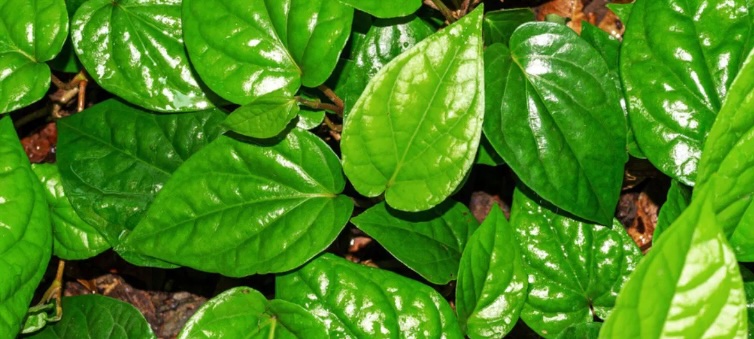
Soil Preparation
For optimal growth and root stability, we recommend using a well-balanced potting soil for all tropical plants.
Specifically for Betel Leaf Plants: Choose deep pots to accommodate their extensive root system. Select slightly acidic, sandy soil with excellent drainage properties.
Suggested Potting Mix: Combine garden soil with compost for nutrient richness and for enhanced fertility and beneficial microorganisms. Add coco peat for improved moisture retention.
Simplify with Pre-Mixed Options: If creating your own potting mix seems overwhelming or you’re unsure about the ingredients, don’t worry. Consider visiting a local gardening store for a ready-made potting mix specifically designed for tropical plants. This convenient option ensures you get a well-balanced blend, eliminating any guesswork and saving you time.
By using this potting mix, you’ll provide your tropical plants, including Betel Leaf, with the ideal environment for robust growth and thriving health.
Potting
Proper Drainage for Healthy Roots – When selecting a pot for your Betel Leaf plant, ensure it features a drainage hole to facilitate efficient water flow and prevent waterlogging.
Moisture Preferences: Betel Leaf plants require a balanced moisture level, preferring to stay consistently moist but not waterlogged. Avoid persistent wetness, as this can lead to root rot and other issues.
Key Considerations: Choose pots with built-in drainage holes. Water carefully to maintain optimal moisture levels. Allow soil to dry slightly between waterings.
Note: When keeping the pot indoors with a tray underneath, please ensure the tray remains water-free and the pot receives sufficient airflow.
Sunlight
Betel leaf plants (Piper betle) are shade-preferring tropicals that thrive in partial light conditions. To ensure optimal growth, provide them with:
Outdoor Placement: Plant under the canopy of a larger tree for dappled shade. Train the vines to climb tree trunks for unique support.
Indoor Placement: East-facing corners: receive gentle, indirect morning light. North-facing corners: benefit from soft, indirect daylight
Important Note: Insufficient sunlight can cause leaf drop. Ensure your Betel Leaf plant receives adequate indirect light to maintain its lush foliage.
Temperature and Placement Guidelines for Betel Leaf Plants
Betel leaf plants thrive in warmer temperatures, typically above 64°F (18°C). To ensure optimal growth:
Warm Weather: Keep plants outdoors during warmer months (spring-fall). Provide partial shade to prevent scorching.
Cold Weather: Bring plants indoors during colder months to protect from frost. Establish strong roots before transitioning outdoors.
Important Clarification: “Warmer conditions” does not equate to direct sunlight. Betel leaf plants prefer bright, indirect light. Avoid direct sun exposure to prevent leaf scorch.
Watering Betel Leaf
Betel leaf plants require regular watering and should be kept moist, but not waterlogged. Water them approximately every four days. Immediately empty the base tray after watering to prevent root rot.
In summer months, regular watering may be necessary, depending on the location’s dryness. Conversely, during rainy and winter seasons, the watering schedule can be reduced.
To ensure optimal moisture levels, consider using a moisture meter to determine if the soil is dry, moist, or wet. Water only when the reading indicates dryness or low moisture.
Fertilizer
To promote healthy growth and robust foliage, feed your Betel Leaf plant with a well-balanced, water-soluble houseplant fertilizer every 20 days during the growing season (spring-fall). This will encourage: Stronger stem development & Larger, more vibrant leaves
Consider the following fertilizer options: Synthetic fertilizers with a balanced N-P-K ratio (e.g., 20-20-20) or Organic alternatives, such as: Nitrogen-rich fertilizers (e.g., fish emulsion, blood meal or Manure-based fertilizers (e.g., composted cow manure).
Remember to follow the manufacturer’s instructions for application rates and frequency to avoid over-fertilization.
You can get slow releasing fertilizer near you, I use this from HomeDepot – https://www.homedepot.com/p/Osmocote-Smart-Release-8-lbs-Plant-Food-Flower-and-Vegetable-277960/312545242
Harvesting
Betel leaf plants typically reach maturity within 4-6 months. At this stage, the leaves are ready for harvest.
Harvesting Tips: Select mature leaves with desirable size and color, Use scissors or a sharp knife to cut the leaves at the stem, Avoid pinching or pulling leaves, as this can damage the stem and compromise future growth.
By harvesting correctly, you’ll: Preserve plant integrity, Encourage continuous leaf production, Enjoy optimal flavor and aroma.
Propagation of Betel Leaf Plants
Spring is the ideal season to take cuttings from your Betel Leaf plant. Follow these steps:
Taking Cuttings: 1. Select a healthy stem with at least two nodes. 2. Cut a 15 cm (6 inch) stem section at a 45-degree angle, just below a leaf node. 3. Remove lower leaves, leaving only 2-3 leaves at the top.
Rooting Options: 1. Water Rooting: Place the cutting in a glass of water, ensuring the node is submerged. 2. Soil Rooting: Plant the cutting in a well-draining potting mix, moistening the soil gently.
Tips for Success: Use clean and sharp pruning tools. Provide bright, indirect light. Maintain consistent moisture levels. Transplant rooted cuttings into individual pots once established.
By following these steps, you’ll successfully propagate new Betel Leaf plants.
Betel Leaf Infestation Treatment
Betel leaf plants can be susceptible to various pests and diseases, affecting their health and productivity. Identifying infestations early and taking prompt action is crucial to prevent damage.
Symptoms of Infestation:
- Yellowing or curling leaves
- Black or white powdery residue
- Sticky substance on leaves or stems
- Holes or tears in leaves
- Slow growth or stunted plants
Organic Treatments (We recommend this):
- Neem oil: Mix 2-3% neem oil with water and spray on affected areas
- Soap solution: Mix 1 tablespoon mild dish soap with 1 quart water and spray
- Horticultural oil: Apply according to product instructions
- Insecticidal soap: Use as directed
- Prune infested areas and dispose
Chemical Treatments:
- Insecticides (pyrethrin, permethrin)
- Fungicides (copper-based, sulfur-based)
Prevention Measures:
- Inspect plants regularly
- Maintain good hygiene
- Provide optimal growing conditions
- Water carefully (avoid overwatering)
- Fertilize balancedly
- Prune regularly
Here are some general tips for growing tropical plants. Happy gardening!
